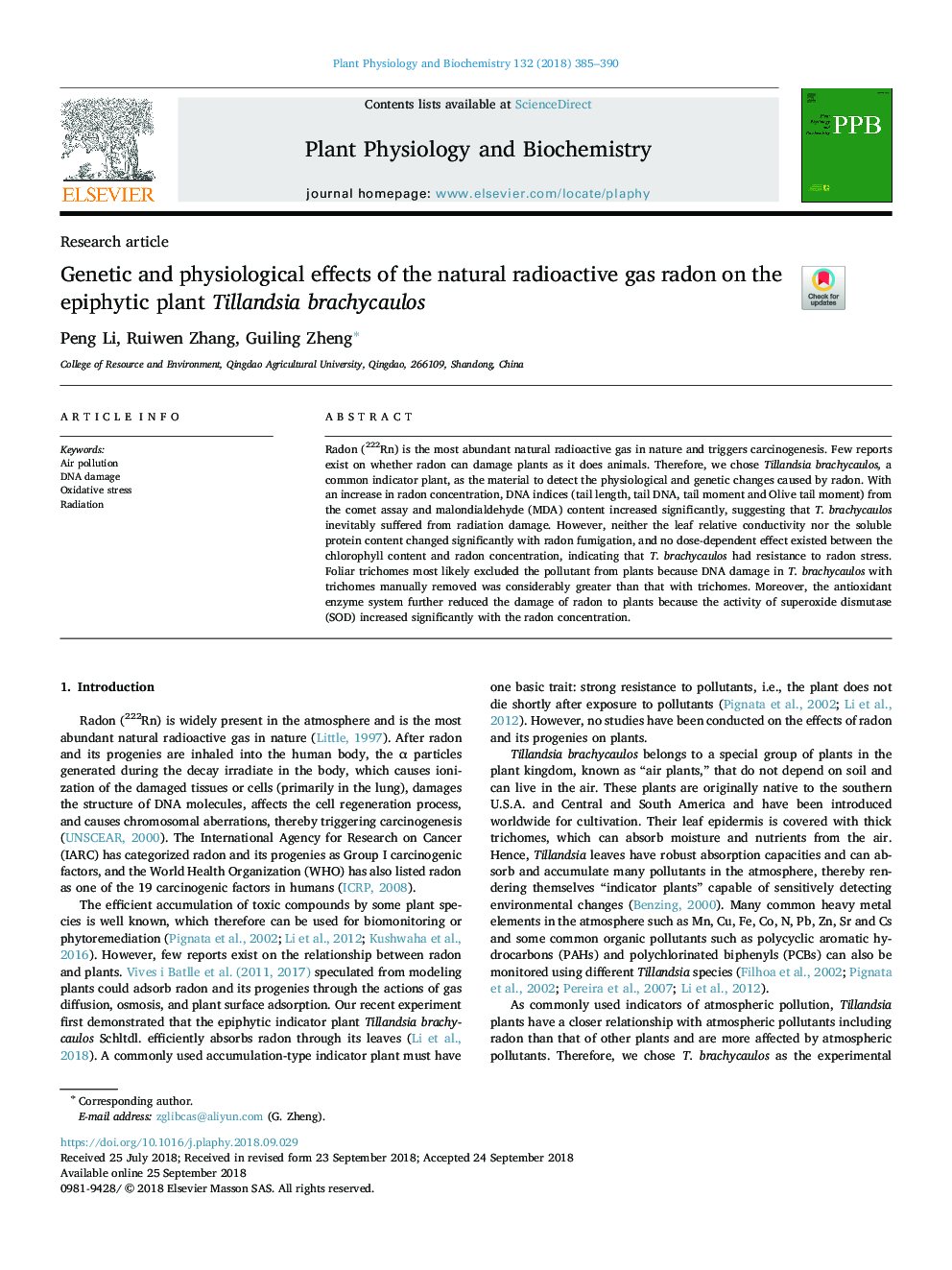| کد مقاله | کد نشریه | سال انتشار | مقاله انگلیسی | نسخه تمام متن |
|---|---|---|---|---|
| 11030884 | 1646126 | 2018 | 6 صفحه PDF | دانلود رایگان |
عنوان انگلیسی مقاله ISI
Genetic and physiological effects of the natural radioactive gas radon on the epiphytic plant Tillandsia brachycaulos
دانلود مقاله + سفارش ترجمه
دانلود مقاله ISI انگلیسی
رایگان برای ایرانیان
کلمات کلیدی
موضوعات مرتبط
علوم زیستی و بیوفناوری
علوم کشاورزی و بیولوژیک
دانش گیاه شناسی
پیش نمایش صفحه اول مقاله

چکیده انگلیسی
Radon (222Rn) is the most abundant natural radioactive gas in nature and triggers carcinogenesis. Few reports exist on whether radon can damage plants as it does animals. Therefore, we chose Tillandsia brachycaulos, a common indicator plant, as the material to detect the physiological and genetic changes caused by radon. With an increase in radon concentration, DNA indices (tail length, tail DNA, tail moment and Olive tail moment) from the comet assay and malondialdehyde (MDA) content increased significantly, suggesting that T. brachycaulos inevitably suffered from radiation damage. However, neither the leaf relative conductivity nor the soluble protein content changed significantly with radon fumigation, and no dose-dependent effect existed between the chlorophyll content and radon concentration, indicating that T. brachycaulos had resistance to radon stress. Foliar trichomes most likely excluded the pollutant from plants because DNA damage in T. brachycaulos with trichomes manually removed was considerably greater than that with trichomes. Moreover, the antioxidant enzyme system further reduced the damage of radon to plants because the activity of superoxide dismutase (SOD) increased significantly with the radon concentration.
ناشر
Database: Elsevier - ScienceDirect (ساینس دایرکت)
Journal: Plant Physiology and Biochemistry - Volume 132, November 2018, Pages 385-390
Journal: Plant Physiology and Biochemistry - Volume 132, November 2018, Pages 385-390
نویسندگان
Peng Li, Ruiwen Zhang, Guiling Zheng,